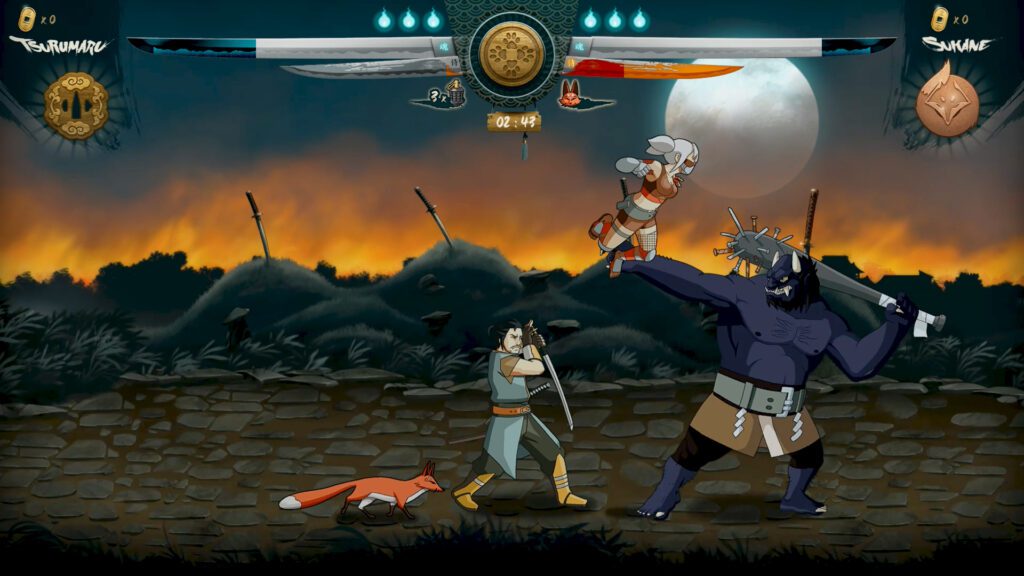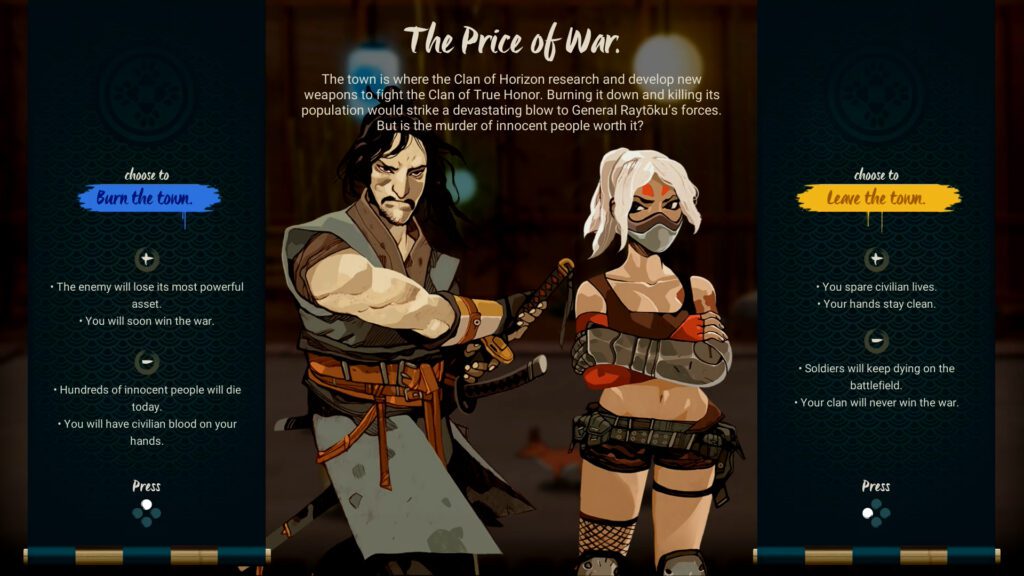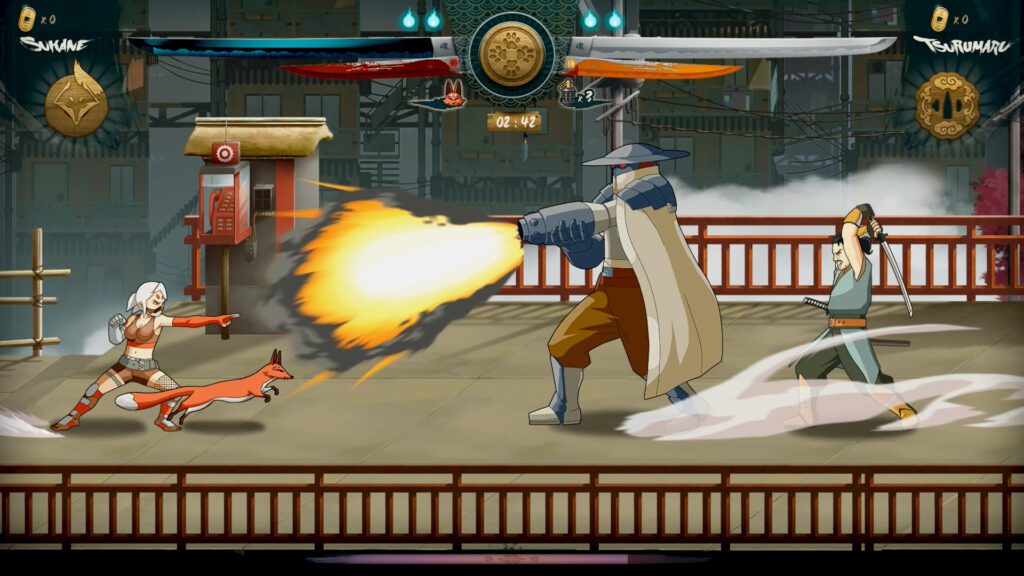Side scrolling brawlers have been around for a long time. They have taken on different spins over the generations, but their essence has always been the same. Samurai Riot tries to find its groove in this genre, but suffers from a lack of variety in its level design, and from a few critical bugs that really harm the overall experience.
Published by: Wako Factory
Developed by: Wako Factory
Reviewed on: Nintendo Switch
Release Date :June 1st, 2022
The way of the Samurai
Samurai Riot begins with you and your partner (you get to pick between 2 characters), fighting a wave of enemies. The story doesn’t immediately establish itself, but soon you become faced with a choice: do you kill the traitor you are faced by in compliance with your leader, or do you forsake the way of the samurai and fight for “the cause?” This could have been a really cool implementation, but sadly it is a fairly inconsequential decision. You will fight basically the same enemies with either choice, just reskinned to look a little different. The plot changes a little too, but the entire plot is so bland that I never really cared about the differences. It had almost no bearing on the actual experience of the game.
The Mechanics and gameplay
Samurai Riot plays well, but there really isn’t much to it. Side scrolling brawlers aren’t generally the most complex games in the world, but this one seems exceptionally bland. The game takes no time to introduce you to any of the move sets, leaving you to figure out the basic controls. There is a command list that lists the few combos the game has, but it offers no explanation for what any of those move sets do. Additionally, the command list doesn’t even bother to list most of the basic one button commands. The gameplay overall becomes a button mashing fest very quickly. At no time did I feel like I was doing much thinking.
There are a few different enemies throughout the game, but very quickly you begin to feel like you have fought the same enemy a thousand times. There are some neat bosses that you fight throughout the adventure. However, the game eventually begins to rotate these bosses into the teams of enemies that you fight, creating these long, protracted conflicts that occur in the middle of levels for no good reason. At one point I had to fight four back to back iterations of the first boss of the game, leading to a conflict that felt never ending.
Another point briefly worth touching on was the glitches. I encountered a few different bugs, but one was almost game breaking. When you are out of lives, you are faced with a choice to continue on, or end your save. If you choose to continue, the game crashes and you lose your save data, all without logging your score. If I wasn’t playing the game for a review, I am honestly not sure that I would have the patience to play again.
A good audio and visual experience
The soundtrack and visuals of this game are perhaps its saving grace. I found the music to be most enjoyable, and the game looks really good. It runs smoothly, and the variation in stages keeps the eye appealed throughout the entire experience. The entire experience feels almost hand drawn, and it is overall really well done. Colors pop at the right moments and the interface blends right in with the rest of the game.
Samurai Riot: a game that just needed more (and Less)
Samurai Riot has some of the makings of a really good game, but just fell short in a lot of areas. The game play becomes repetitive very quickly, and despite the games best efforts, does not offer enough variety. The choices feel almost inconsequential, and the two characters you can choose from just don’t differ enough for me to care. In another review I wrote, I talked about how sometimes making a game shorter can be the right choice. If Samurai Riot cut down on its level length, offered some meaningful decisions, and introduced some variety into its gameplay, it could be a really enjoyable game. For now though, it is an overly grindy (and buggy) experience with not a ton of payoff.



